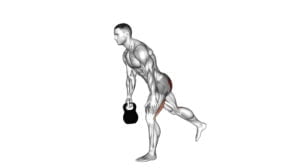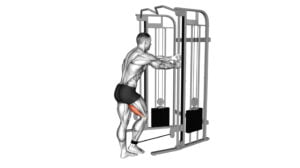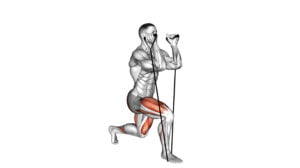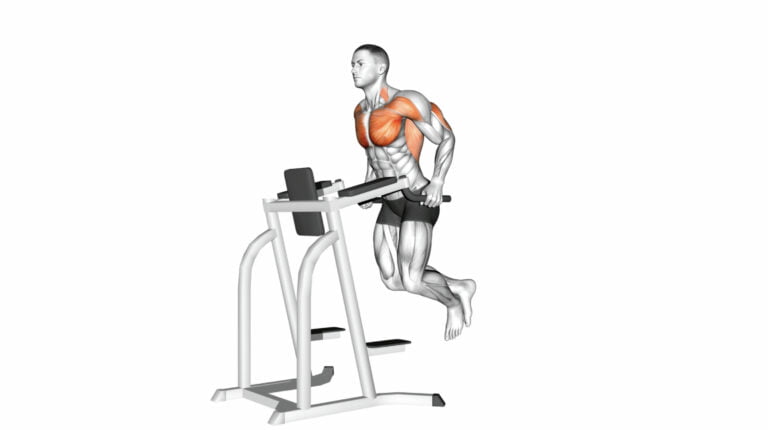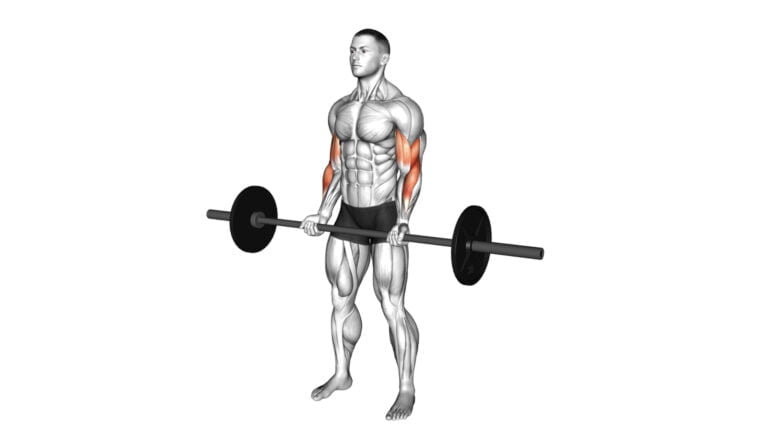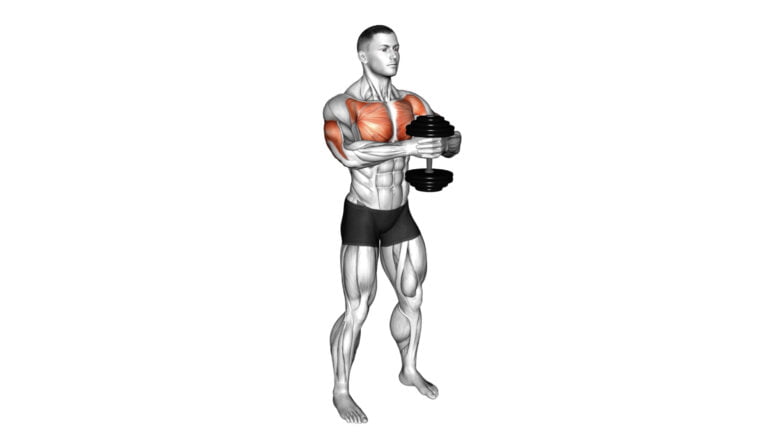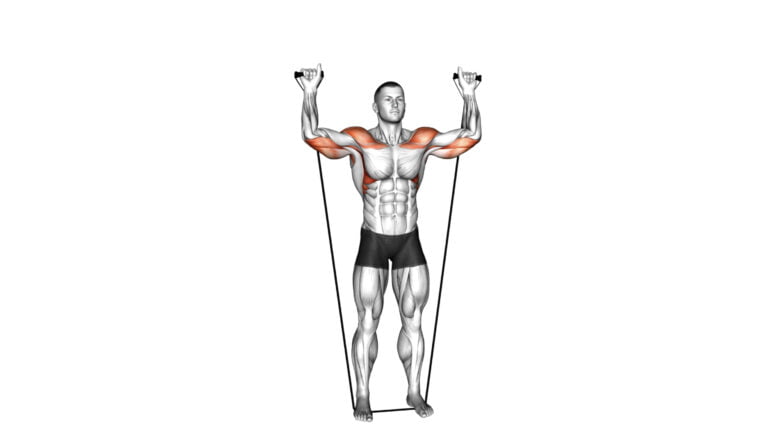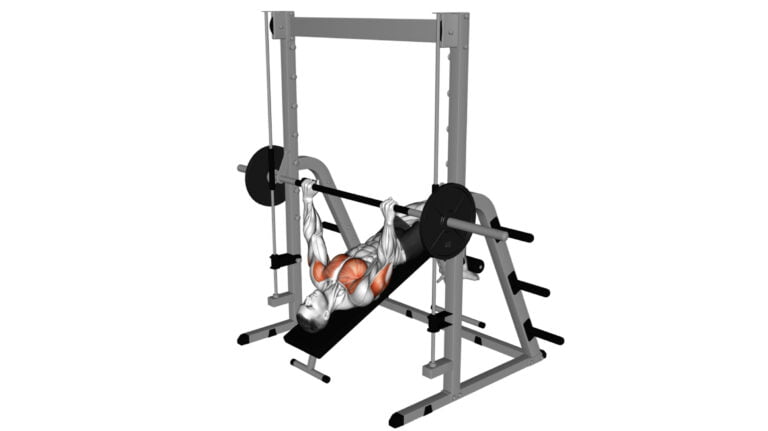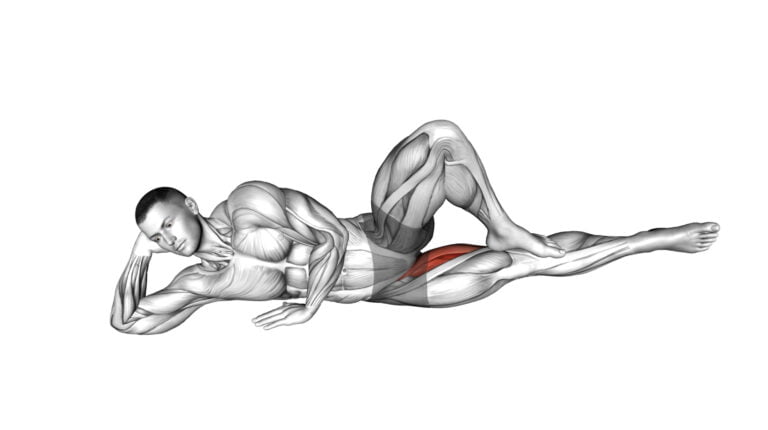Effective Band Hamstring Exercises For Stronger And Toned Legs
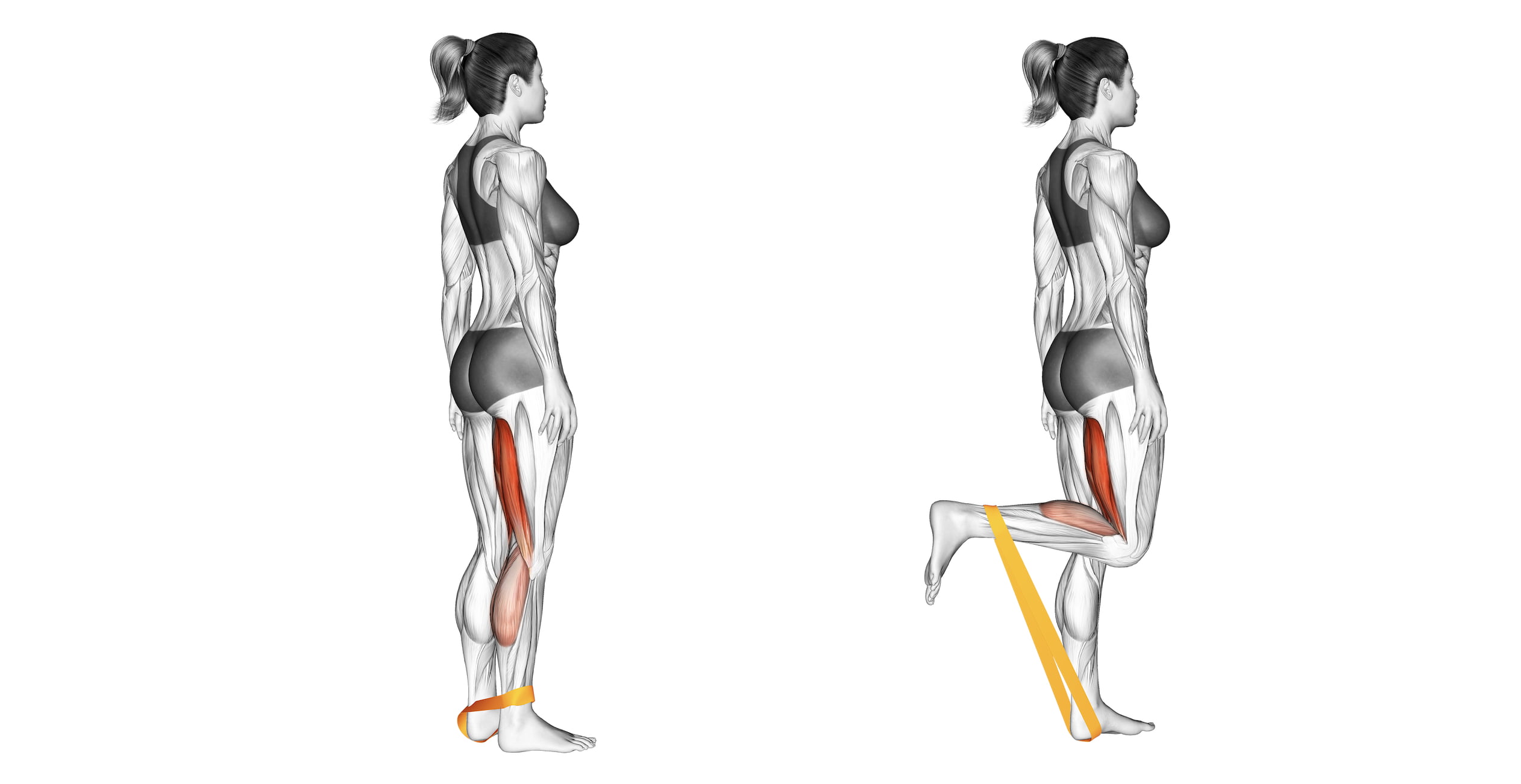
Leg muscle imbalances are a common roadblock for fitness enthusiasts and athletes alike, often manifesting in a propensity to focus on the quadriceps while neglecting their posterior counterparts: the hamstrings.
As a seasoned personal trainer with years of experience guiding individuals through targeted lower-body regimens, I can affirm that incorporating band hamstring exercises into your routine is an essential step toward achieving balanced muscle development and overall leg strength.
Understanding how to effectively train this crucial trio—the semimembranosus, semitendinosus, and biceps femoris—can not only enhance athletic performance but also contribute significantly to sculpted, toned legs.

Designed to unlock the potential lying dormant at the back of your thighs, this article will delve deep into efficient band-based moves that promise robust gains without needing heavy gym equipment.
Keep reading; transformation awaits.
Key Takeaways
- Using resistance bands for hamstring workouts improves muscle strength, flexibility, and balance in the lower body.
- Effective band exercises include lying hamstring curls, Romanian deadlifts, glute bridges, good mornings, single-leg glutes bridge, donkey kicks, and banded marches to target and tone leg muscles.
- Always focus on proper form with a neutral spine and engaged core during exercises to avoid injury and get the best results.
- It’s important to select the right level of resistance band according to your fitness level; start lighter and move up as you gain strength.
- Band hamstring exercises are versatile enough to be done at home or in a gym setting making them accessible for anyone looking to strengthen their legs.
The Importance of Training the Hamstring Muscles
The hamstring muscles play a crucial role in supporting the lower body and are essential for various physical activities, including walking, running, jumping, and squatting. Banded hamstring exercises help strengthen these muscles, improving stability, mobility, and overall lower body strength.
Anatomy and Function of the Hamstrings
Your hamstrings play a key role in your daily movements, from walking to squatting down. This muscle group stretches along the back of your thighs, from the bottom of your pelvis to just below your knees.
They work hard with each step you take, helping bend your knee and move your hips backward. Strong hamstrings are essential for engaging in physical activities that require running or jumping.
These powerhouse muscles support various motions such as knee flexion when you curl your leg towards your butt during a sprint. They also assist during hip extension when straightening up from a bowing position or while pushing off the ground.
Keeping these muscles supple and robust can reduce lower back pain and prevent hamstring injuries that are common among athletes and fitness enthusiasts alike. As we explore effective exercises to strengthen this vital muscle group, let’s focus on how resistance bands can enhance muscle growth for firmer legs and improved performance in compound movements like romanian deadlifts and sumo squats.
Benefits of Banded Hamstring Exercises
Integrating banded hamstring exercises into your routine pays off with increased muscle strength and better balance between the thigh’s front and back. This harmony reduces the risk of injuries, particularly around the knee joints, by supporting steady movements during activities like squatting down or sprinting.
Bands provide a unique form of resistance that differs from dumbbells or kettlebells because they create constant tension throughout the exercise movement. This continuous pull challenges your hamstrings more effectively and leads to greater muscle hypertrophy.
Engaging in these exercises boosts not just strength but also flexibility and range of motion for daily tasks. Leg muscles work together seamlessly when you have robust hamstrings; this collaboration is thanks to improved coordination within the hamstring group itself as well as with neighboring glutes and calves.
Another perk is that isolation exercises with bands can target specific areas without overloading other parts of the body, promoting joint health while sculpting firm legs grounded in functional fitness.
7 Effective Band Hamstring Exercises
Get ready to strengthen and tone your legs with these 7 effective band hamstring exercises. From resistance band lying hamstring curls to banded hamstring marches, these exercises will target and work the muscles in your hamstrings for a stronger lower body.
1. Resistance Band Lying Hamstring Curl
Grab your resistance band and lie flat on your stomach to prepare for the Resistance Band Lying Hamstring Curl. This exercise targets the back of your thigh by focusing on hamstring contraction.
Secure one end of the band around a sturdy object and loop the other end around both ankles. Keep your spine neutral, head relaxed on the ground, and hands by your sides.
As you breathe in, curl your heels towards your glutes, flexing at the knee while keeping hips firmly planted on the floor. Make sure you feel a strong contraction in those hamstring muscles before slowly extending your legs back out without letting them touch down all the way – this maintains tension throughout each rep.
Focus not just on pulling with strength but also controlling every part of that movement; it’s about quality over speed to cultivate powerful hamstrings ready for anything from sprinting to squatting deeply.
2. Romanian Deadlift with Resistance Band
Transitioning from the isolated lying hamstring curl, the Romanian deadlift with a resistance band engages not only your hamstrings but also your glutes and lower back. This compound exercise is an excellent way to strengthen your posterior chain while improving hip hinge mechanics.
To perform this movement, stand on the middle of the resistance band with feet shoulder-width apart. Grasp the ends of the band, keeping it taut throughout the exercise.
Hinge at your hips, maintaining a neutral spine as you lower your torso while feeling a deep stretch in your hamstrings. Keep your knees slightly bent and push through your heels to return to standing position.
3. Band Glute Bridge
Transitioning from the Romanian Deadlift with Resistance Band, the band glute bridge is another effective hamstring exercise that also targets the glutes. To perform this exercise, begin by lying on your back with your knees bent and feet flat on the ground.
Place a resistance band just above your knees. Then, push through your heels to lift your hips off the ground until your body forms a straight line from shoulders to knees.
Engage your glutes and hold for a moment at the top before slowly lowering back down. This exercise not only strengthens and tones your hamstrings but also helps in improving hip stability and posture.
4. Band Good Morning
Transitioning from the Band Glute Bridge, another effective band hamstring exercise that targets and strengthens the posterior chain is the Band Good Morning. This exercise involves standing with your feet shoulder-width apart and a resistance band looped around your neck and held at each end.
Keeping a slight bend in your knees, hinge at your hips while maintaining a straight back until you feel a stretch in your hamstrings. Then return to the starting position by contracting your glutes and hamstring muscles.
The Band Good Morning is great for developing strength and stability in the hamstrings, improving hip mobility, and enhancing overall lower body function. Additionally, it helps to reinforce proper hip hinging technique essential for various athletic movements like running, jumping, or weightlifting.
5. Single-Leg Glute Bridge Banded
Transitioning from band good mornings to the single-leg glute bridge, this exercise targets the hamstrings, glutes, and core stability. To perform this move, start by lying on your back with one knee bent and foot flat on the ground while extending the other leg straight.
Push through the heel of the foot that is planted on the ground to lift your hips upward until your body forms a straight line from shoulders to knees.
Engaging in single-leg glute bridges helps build unilateral strength and stability, addressing muscle imbalances between sides. This exercise also activates deep stabilizing muscles while promoting better overall balance and coordination.
6. Resistance Band Donkey Kick
The resistance band donkey kick is a powerful exercise that targets the glutes, hamstrings, and lower back. Begin by securing a resistance band around your ankles and positioning yourself on all fours, ensuring your hands are directly under your shoulders.
Then, kick one leg backward while keeping it bent at a 90-degree angle until your thigh is parallel to the ground. Lower your leg without touching the ground and repeat for the desired number of reps before switching to the other leg.
By incorporating resistance bands into this exercise, you can amplify its effectiveness in strengthening and sculpting your glutes and hamstrings. The added resistance challenges these muscles throughout the entire range of motion, promoting greater muscle engagement and growth over time.
For an intensified workout experience with practical benefits for functional strength and toning goals, include this exercise in your hamstring routine.
7. Banded Hamstring Marches
Banded hamstring marches are a dynamic exercise that engages the hamstrings, glutes, and core muscles. To perform this exercise, lie on your back with knees bent and feet flat on the ground.
Place a resistance band around both legs just above your knees. Then, lift one foot off the ground while keeping your knee bent at a 90-degree angle. Alternate lifting each leg up toward your chest while maintaining tension in the resistance band.
This movement helps to strengthen and stabilize the hamstring muscles while also improving hip mobility and stability.
How to Create a Sample Hamstring Workout Routine Using Bands
In this section, we’ll provide tips for proper form and choosing the right resistance bands to help you create an effective hamstring workout routine using bands. So buckle up and get ready to step up your leg game with these powerful exercises!
Tips for Proper Form
Maintain a neutral spine position throughout the exercise to avoid straining your lower back. Keep your core engaged and focus on a controlled movement to fully engage the hamstring muscles.
Ensure that the resistance band is securely in place and does not slip during the exercises. Start with lighter resistance bands to master proper form before progressing to heavier ones for an effective workout.

Choosing the Right Resistance Bands
When selecting resistance bands for hamstring exercises, consider the level of resistance needed based on your fitness level and the specific exercise being performed. For beginners, opt for lighter resistance bands to prevent strain or injury while focusing on proper form and technique.
Intermediate users may benefit from medium-level resistance bands to challenge their strength and further progress in their workouts. Advanced individuals should choose heavy-duty resistance bands for maximum muscle engagement and development.
It’s crucial to ensure that the chosen resistance band provides enough tension throughout the entire range of motion of each exercise. Testing different bands is recommended to find the ideal one that challenges your muscles without compromising control or risking improper execution.
Conclusion
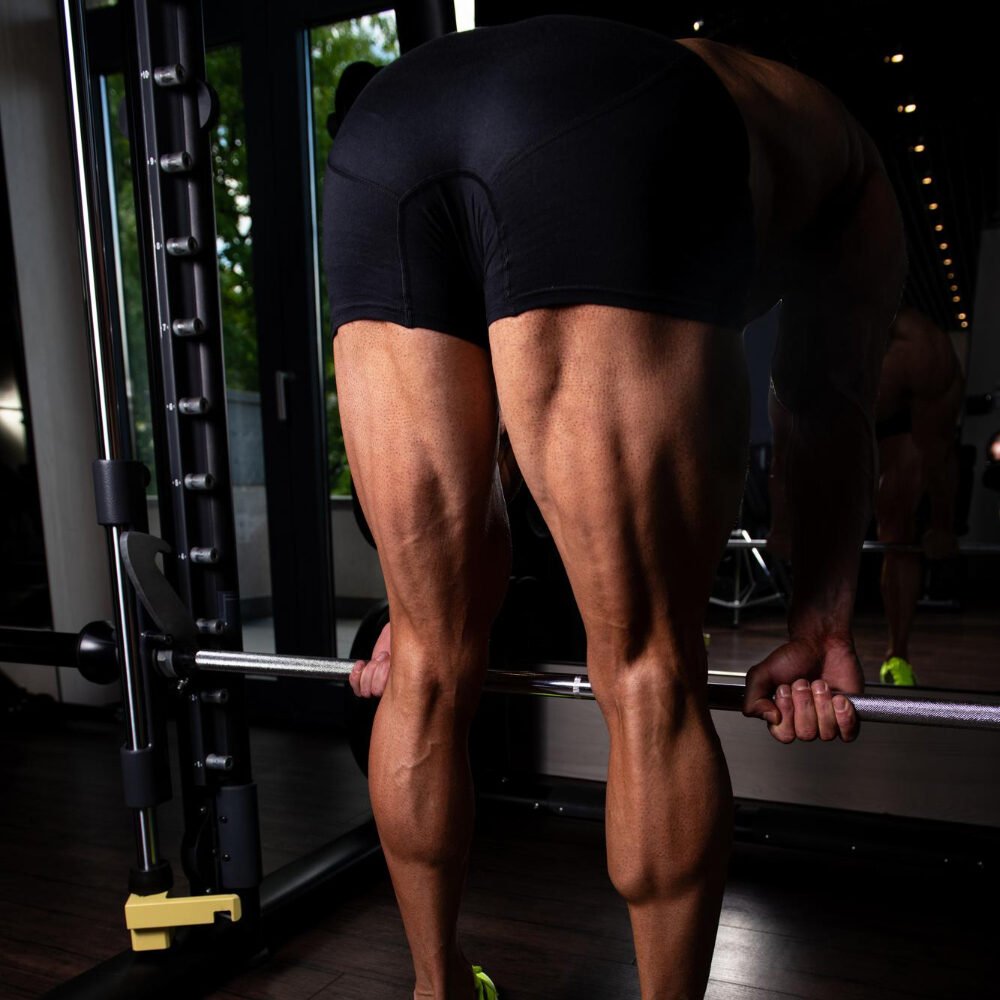
Incorporate these band hamstring exercises into your routine for stronger, toned legs. The practicality and efficiency of these exercises make them easy to implement. You will experience the potential impact of applying these strategies through significant improvements.
Reap the benefits and feel motivated to take action towards your fitness goals. Keep pushing forward with enthusiasm and dedication to achieve a stronger lower body.
FAQs
1. What are band hamstring exercises?
Band hamstring exercises involve using resistance bands to target the muscles at the back of your thighs, known as hamstrings, for stronger and more toned legs.
2. How do these exercises strengthen my legs?
These exercises work by adding tension with a band to movements like squatting down or stretching, which activates your hamstrings and related muscles like the calf, psoas, and piriformis.
3. Can I improve my flexibility with band hamstring workouts?
Yes! Band hamstring workouts encourage internal rotation and external rotation in your hips while focusing on muscle groups that include the abductors and hip extensors—key players in enhancing flexibility.
4. Will doing Bulgarian split squats with a band help me tone my legs?
Absolutely! A Bulgarian split squat is an effective move for toning because it focuses on muscle insertion points around your tibia and fibula bones, giving you sculpted legs through flexed motions against band resistance.
5. Is proper form important when performing these leg exercises?
Maintaining proper form is crucial; ensure that during exercises such as squat downs or leg stretches with a band, your toes are pointed correctly to maximize benefits while minimizing injury risks.

Author
Years ago, the spark of my life’s passion ignited in my mind the moment I stepped into the local gym for the first time. The inaugural bead of perspiration, the initial endeavor, the very first surge of endorphins, and a sense of pride that washed over me post-workout marked the beginning of my deep-seated interest in strength sports, fitness, and sports nutrition. This very curiosity blossomed rapidly into a profound fascination, propelling me to earn a Master’s degree in Physical Education from the Academy of Physical Education in Krakow, followed by a Sports Manager diploma from the Jagiellonian University. My journey of growth led me to gain more specialized qualifications, such as being a certified personal trainer with a focus on sports dietetics, a lifeguard, and an instructor for wellness and corrective gymnastics. Theoretical knowledge paired seamlessly with practical experience, reinforcing my belief that the transformation of individuals under my guidance was also a reflection of my personal growth. This belief holds true even today. Each day, I strive to push the boundaries and explore new realms. These realms gently elevate me to greater heights. The unique combination of passion for my field and the continuous quest for growth fuels my drive to break new ground.





